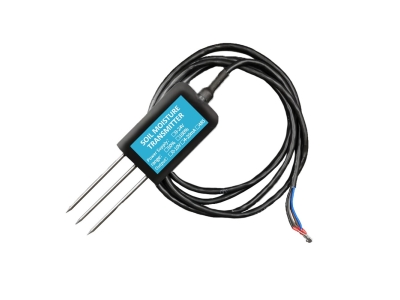
Precision Farming Takes a Leap Forward with Soil Sensor Innovation
soil sensor innovation has propelled precision farming to new heights, empowering farmers to make data-driven decisions that enhance productivity, sustainability, and profitability.

soil sensor innovation has propelled precision farming to new heights, empowering farmers to make data-driven decisions that enhance productivity, sustainability, and profitability.
Precision farming, also known as precision agriculture, has revolutionized the way we cultivate crops by leveraging technology to optimize inputs and maximize yields. Central to the success of precision farming is the accurate and timely assessment of soil conditions. Soil sensors have emerged as indispensable tools in this regard, enabling farmers to monitor key soil parameters with precision and efficiency. In recent years, soil sensor innovation has propelled precision farming to new heights, empowering farmers to make data-driven decisions that enhance productivity, sustainability, and profitability.

Understanding Precision Farming:
Precision farming involves the application of advanced technologies to manage variability within fields and optimize agricultural practices accordingly. This approach recognizes that soil conditions, crop requirements, and environmental factors can vary significantly across a farm, and seeks to tailor inputs such as water, fertilizers, and pesticides to specific needs. By doing so, precision farming minimizes waste, reduces environmental impact, and increases resource efficiency.
The Role of Soil Sensors:
Soil sensors are essential components of precision farming systems, providing real-time data on key soil parameters that influence crop growth and development. These parameters include soil moisture, temperature, pH, nutrient levels, salinity, and compaction. By monitoring these factors, farmers can assess soil health, optimize irrigation and fertilization schedules, and identify areas of concern such as nutrient deficiencies or water stress.
nnovation in Soil Sensor Technology:
Recent advancements in soil sensor technology have expanded the capabilities and versatility of these devices, enabling more accurate and comprehensive soil monitoring. One notable innovation is the development of wireless and IoT-enabled soil sensors, which allow for seamless data collection and remote monitoring across large agricultural landscapes. These sensors can be deployed in arrays or networks, providing spatially and temporally continuous data for precise decision-making.
Another breakthrough in soil sensor innovation is the integration of multiple sensing modalities into single devices. For example, some soil sensors combine capacitance-based measurements for soil moisture with electrochemical sensors for nutrient analysis, providing farmers with a holistic view of soil conditions. Additionally, advances in miniaturization and cost reduction have made soil sensors more accessible to farmers of all scales, democratizing the benefits of precision farming.
Applications of Soil Sensors in Precision Farming:
Soil sensors find diverse applications in precision farming, spanning from irrigation management to nutrient optimization and beyond. In irrigation management, soil moisture sensors help farmers determine when and how much to irrigate, reducing water usage and minimizing the risk of waterlogging or drought stress. Similarly, nutrient sensors enable precise fertilizer application based on soil nutrient levels, preventing over-application and nutrient runoff.
Soil sensors also play a crucial role in site-specific management strategies, wherein inputs are tailored to specific zones within a field based on soil variability. By mapping soil properties using sensor data, farmers can implement variable rate application of inputs, optimizing resource allocation and maximizing crop yields. Moreover, soil sensors facilitate real-time monitoring of soil health indicators, allowing for early detection of issues such as soil compaction or pH imbalance.
Case Studies:
Numerous case studies illustrate the transformative impact of soil sensor innovation on precision farming practices. In a vineyard in California, soil sensors integrated with weather data and crop models enabled growers to optimize irrigation scheduling based on vine water status, resulting in significant water savings and improved grape quality. Similarly, in a maize field in Iowa, soil sensors guided variable rate nitrogen application, reducing fertilizer usage while maintaining high yields and minimizing environmental impact.
In another example, a wheat farm in Australia utilized soil sensors to monitor soil moisture levels during a dry spell, allowing farmers to adjust irrigation schedules and conserve water without compromising crop yields. These case studies highlight how soil sensor innovation enhances the resilience and sustainability of agricultural systems, enabling farmers to adapt to changing environmental conditions and resource constraints.
Challenges and Future Directions:
Despite the considerable advancements in soil sensor technology, several challenges remain to be addressed. Calibration and validation of soil sensors across different soil types and conditions can be challenging, requiring ongoing research and calibration efforts. Moreover, interoperability and data integration issues may arise when integrating soil sensor data with other agricultural technologies such as precision machinery or farm management software.
Looking ahead, the future of soil sensor innovation in precision farming holds immense promise. Continued research and development efforts are expected to further enhance sensor accuracy, reliability, and usability, making them indispensable tools for sustainable agriculture. Integration with emerging technologies such as artificial intelligence and machine learning will enable advanced analytics and decision support systems, further optimizing farming practices and maximizing productivity.
Conclusion:
Soil sensor innovation is driving significant advancements in precision farming, empowering farmers to make data-driven decisions that enhance productivity, sustainability, and profitability. By providing real-time insights into soil conditions, these sensors enable precise management of resources such as water, fertilizers, and pesticides, minimizing waste and environmental impact. As soil sensor technology continues to evolve, the future of precision farming looks brighter than ever, offering solutions to the challenges of feeding a growing global population while safeguarding the health of our planet.